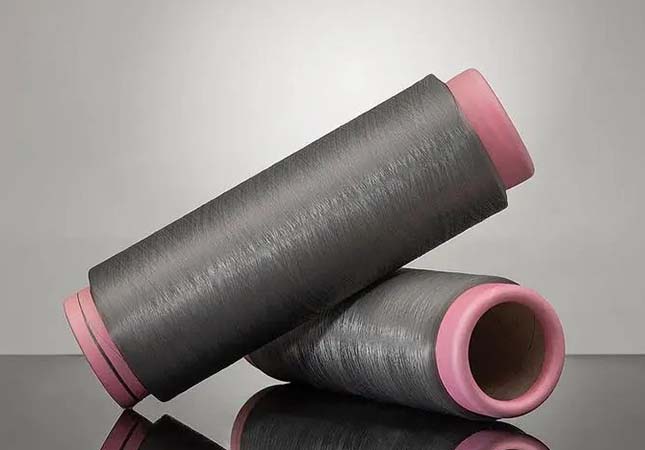In recent years, new types of textile materials have emerged one after another, continuously updating their performance to better meet consumers' living needs. Graphene, as a new nanomaterial, has been widely applied in the textile industry for the preparation of outdoor products, special occupational wear, professional sportswear, and more, due to its outstanding properties such as anti-static, UV protection, antibacterial, conductivity, and heat resistance.

Overview of Graphene
June 6th is International Graphene Day, and research and application of graphene have been a hot topic in the scientific community. Graphene is a single-layer structure that exists in nature. It is composed of tightly packed carbon atoms arranged in a hexagonal honeycomb lattice, exhibiting strong electrical and thermal conductivity. This novel material was obtained through a method called mechanical exfoliation by British researchers, and its nearly complete transparency earned the Nobel Prize in Physics in 2010, drawing attention from scholars to this new material. Due to its unique properties, graphene has high potential for various applications, making it a significant research area in materials science, micro-nanofabrication, energy, biomedicine, drug delivery, etc. Many scientists have high expectations for graphene, often referring to it as "black gold."
In recent years, the multifunctional properties of graphene, such as low-temperature far-infrared emission, have been applied to textile materials. This allows different types of fibers or fabrics to possess properties like antibacterial, anti-static, and UV resistance. Furthermore, graphene's environmentally friendly and non-toxic characteristics align with the trend of sustainable development in China. As a result, an increasing number of textile scholars have engaged in research on graphene-modified fibers, effectively promoting the continuous development of high-value and multifunctional fabrics in the textile industry.
Preparation and Application of Graphene-Modified Textiles
The lightweight and soft characteristics of textile fabrics allow graphene not only to modify textile fibers but also to impart additional functionality to traditional textiles. Graphene modification of textiles is mainly achieved through methods such as impregnation, layer-by-layer self-assembly, spray coating, electrophoretic deposition, blend spinning, chemical vapor deposition, and others. Through these modifications, textiles acquire various functionalities, including UV protection, conductivity, antibacterial properties, and electronic shielding.
Graphene-Modified Conductive Textiles
Traditional textile materials have poor conductivity and are insulating, while graphene exhibits excellent conductivity with a resistivity of approximately 10-6Ω·cm. By integrating graphene onto the surface of fabrics, superior conductive properties can be imparted to the textiles, making them suitable for use in flexible wearable electronic products. Researchers used graphene oxide obtained through ultrasonic oxidation exfoliation and cotton fabric as raw materials, and applied a dip-rolling reduction method to prepare graphene-modified conductive cotton textiles.
Experimental results show that with an increase in the number of dip-rolling reduction cycles, the deposition of graphene oxide on the fabric surface increases, forming a stable conductive layer. As a result, the modified cotton fabric exhibits excellent conductivity, holding promise for applications in flexible electrodes and smart clothing domains. Wang Haiying and others treated the fabric with an alkaline solution to induce partial exfoliation, followed by treatment with supercritical carbon dioxide to increase the fabric surface roughness. After this pre-treatment, the fabric allows graphene slurry to enter the fabric structure and the swelled gaps, ensuring the functionality of graphene-modified conductive textiles is more durable.
SUNTECH Textile Machinery offers a comprehensive range of products that cater to various fabric types. Our product lineup includes, but is not limited to, pinking machine, loom machine, weaving machine, beam truck, fabric cutting machine, motorized beam trolley, beam storage, and fabric inspection machine. With our innovative approach and extensive experience, SUNTECH Textile Machinery remains at the forefront of the textile industry. We warmly welcome requests for quotes and cooperation opportunities from you!




